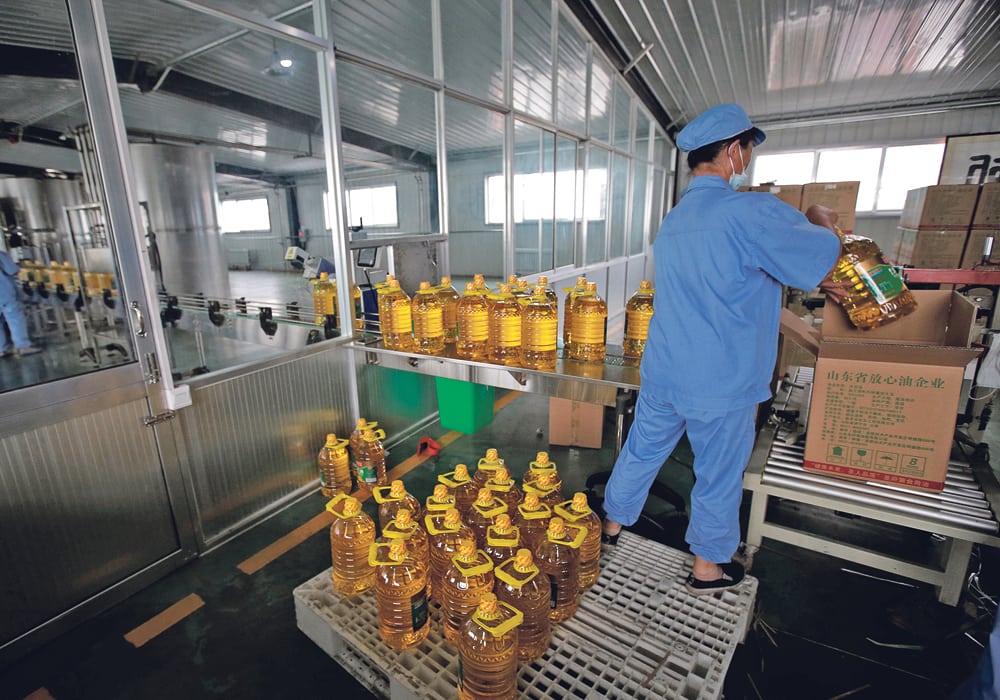Chinese ministry of agriculture predicts 10 million tonne drop in soybean imports, analysts not convinced that will happen
Analysts are having a tough time believing China is about to dramatically curtail its soybean consumption.
China’s ministry of agriculture cut its 2018-19 soybean import estimate to 84 million tonnes in its September crop report. That is down from its August estimate of 94 million tonnes.
Rich Nelson, chief strategist with Allendale Inc., said Chinese government officials and some people in China’s public sector are convinced this will happen.
However, almost all of the U.S. soybean sector and the U.S. Department of Agriculture believe it is empty rhetoric.
Read Also

Biofuel sector happy with federal budget
Advanced Biofuels Canada says new Biofuel Production Incentive is a lifeline until CFR amendments are in place.
The USDA, in its September World Agricultural Supply and Demand Estimates report, dropped its Chinese import number slightly to 94 million tonnes, down from 95 million tonnes in August.
“There are two very clear, divergent points of view on this issue,” said Nelson.
He isn’t making any changes to Allendale’s supply and demand numbers for China.
“We’re just adjusting who they get it from and where they get it from,” he said.
China has stopped buying soybeans from the U.S. in the midst of their tariff war and is instead sourcing product from places like Brazil and Argentina.
But Nelson doesn’t believe that a country that accounts for 60 percent of the world trade in soybeans will be able to wean itself off of the product.
“The pathway towards making the 10 million tonne reduction that they’re talking about is a little extreme. It’s possible but it would require a lot of pain from the Chinese producers’ standpoint and a lot of inefficiencies as well,” he said.
“China has proposed a whole range of different ways of making this happen, including just a complete net reduction in the amount of protein being fed to animals.”
Dim Sums, a web blog on rural China’s economics and policy, agrees that China’s target of a 10 million tonne reduction in soybean imports is unrealistic.
The Sept. 24 blog said at least one Chinese government official has stated that the country has been consuming too much soybean meal and needs to cut back.
In 2017-18 China consumed 70.4 million tonnes of soybean meal compared to 11.9 million tonnes of rapeseed meal and four million tonnes of cottonseed meal.
“No one ordered Chinese farmers or feed mills to use soybean meal. The high use of soybean meal is simple economics: soybean meal is relatively cheap in China compared to other feeds,” stated the blog.
Soybean meal is about 1.65 times the price of corn in China, while in the U.S. it is 2.5 to three times the price of corn. Dim Sums doesn’t see any signs of that ratio changing in China.
And Dim Sums doesn’t expect bargain-priced Indian cottonseed, Ukrainian sunflower or Canadian canola replacing 10 million tonnes of U.S. soybeans.
Nelson agreed that it is unlikely for alternative oilseeds to make huge inroads in China, although he does expect some increase in Canadian canola shipments to China.
“I do think that is a valid way for them to help minimize some of the extreme pain that they’ll be dealing with in the coming months,” he said.
Jim Everson, president of the Canola Council of Canada, said canola is already reaping some rewards of the tariff spat between China and the U.S.
“We’re seeing strong demand from China for seed, oil and meal,” he said.
“I suspect some of that is related to their requirements for protein and the inaccessibility of U.S. soybeans.”
















